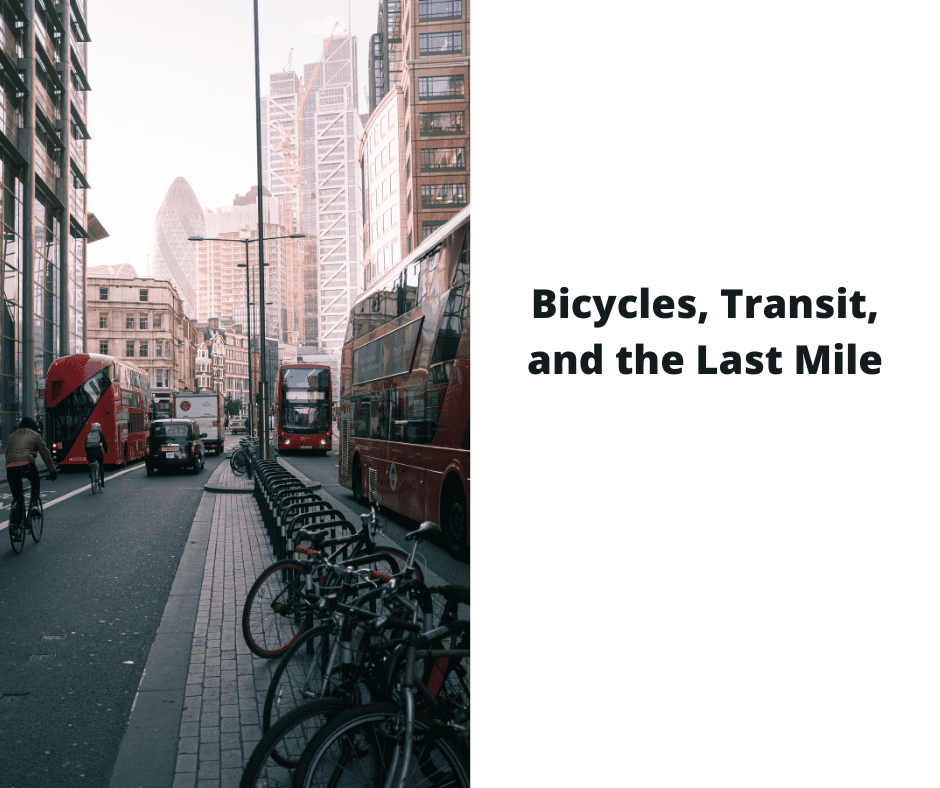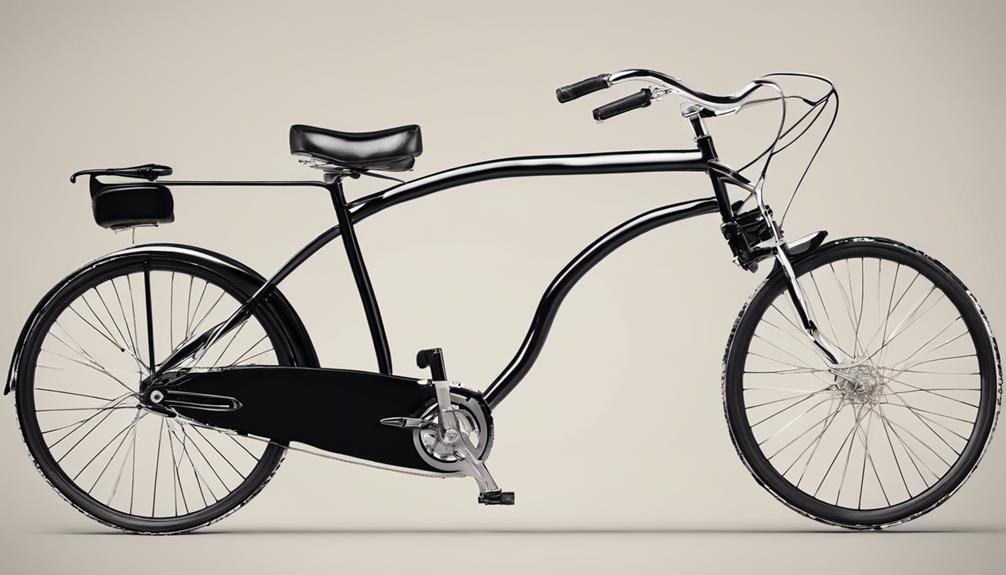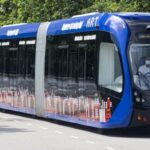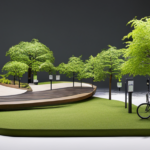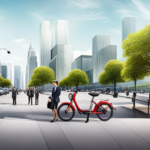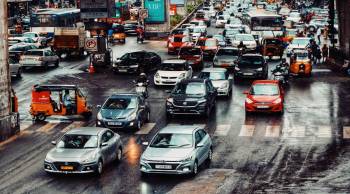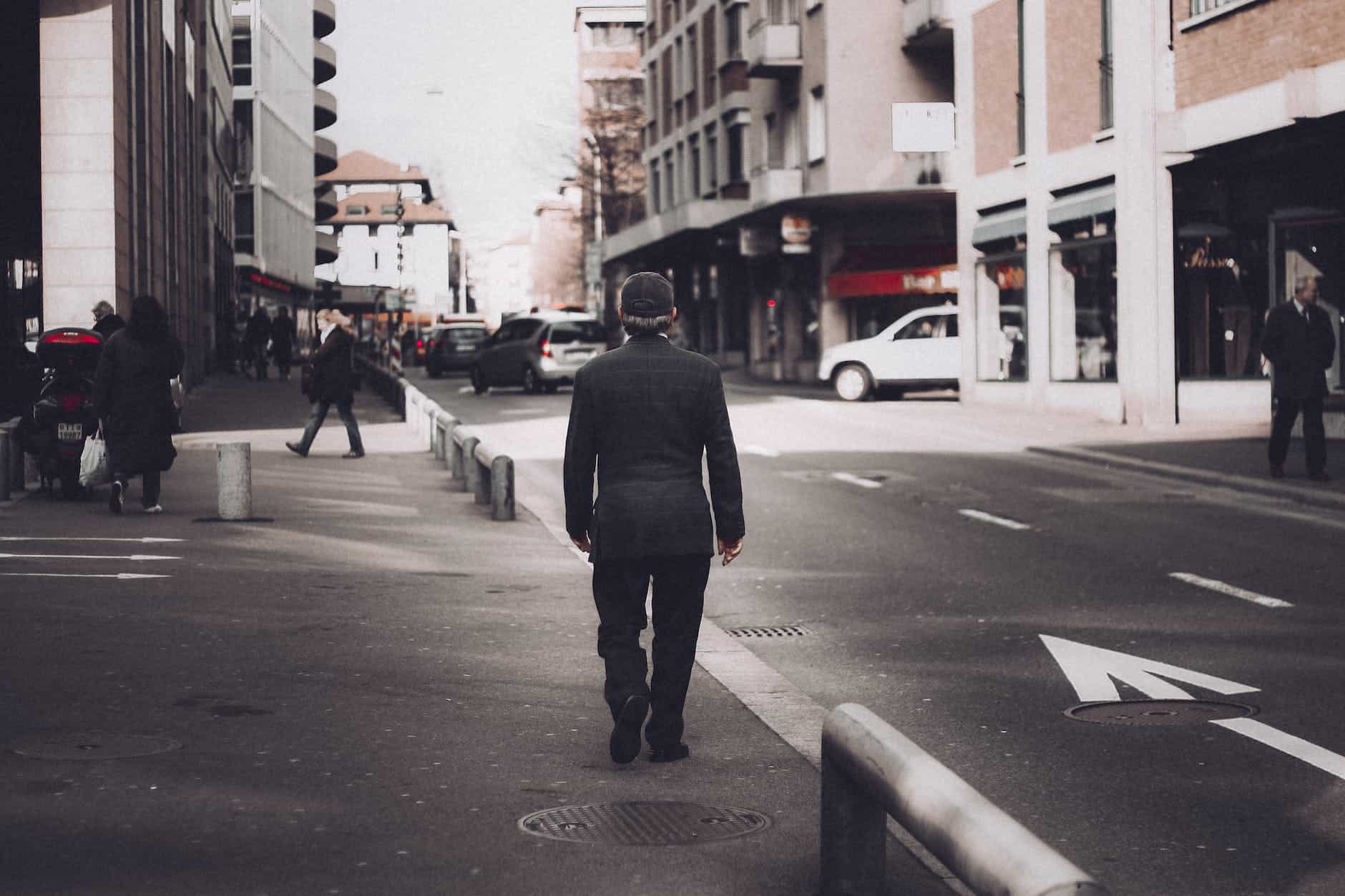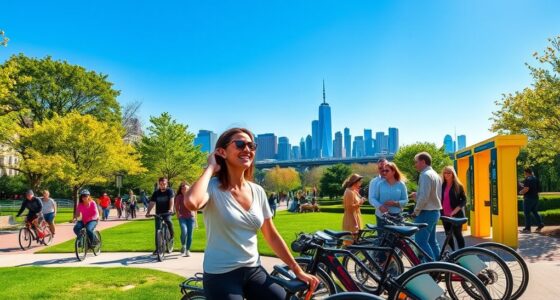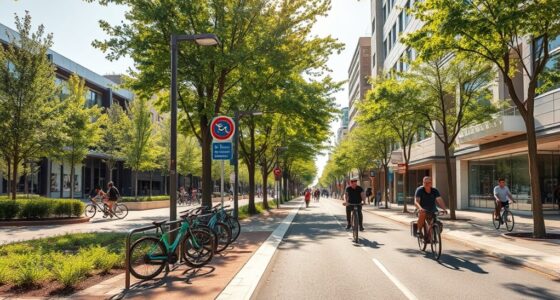In numerous urban areas, the final segment of a commute, typically referred to as the “last mile” – the stretch from public transportation stops to either home or the workplace – is frequently the most complicated and inefficient part of travel. This typically arises due to transit stations being situated on the outskirts of less densely populated neighborhoods that offer fewer destinations. Consequently, individuals usually find themselves having to either walk or cycle to get to their ultimate destination.
This can be time-consuming and inconvenient, especially if there is no safe place to store a bike. And yet, bikes can play an essential role in solving the last mile problem.
By providing a fast and convenient way to cover short distances, bikes can help people get where they need to go without using a car. In addition, bikes can be easily stored on transit vehicles or at home, making them a flexible and convenient option for the last mile. Bikes will likely play an essential role as cities continue to search for solutions to the last mile problem.
Bicycles, Transit, and the Last Mile
Public transportation is a vital part of the daily lives of many Americans. Whether they rely on buses, trains, or subways to get to work or school, transit agencies play a crucial role in keeping cities moving. However, one persistent problem has plagued transit agencies for years: the so-called “last mile.”
The last mile refers to the distance between a transit stop and a passenger’s final destination, and it can often be the most challenging leg of a journey. In lower-density communities, where convenient, high-frequency local feeder buses, light rail, and trolley lines are unlikely economically viable, the last mile can be a real challenge.
The most common solution is the Park-n-Ride—a huge surface lot or parking structure adjacent to a regional mass transit line.
While Park-n-Rides can provide a much-needed service for commuters, they are often underutilized and can take up valuable resources that could be used to improve other aspects of the transit system.
People Love Their Cars
People love their cars. They feel a sense of freedom and independence when they get behind the wheel. But car ownership has many responsibilities, including finding a parking place. In many cities, parking is in short supply and can be very expensive.
As a result, people often park their cars in residential neighborhoods or on busy streets, leading to congestion and frustration for residents. Even when free parking, it still takes up valuable space that could be used for other purposes.
In some cases, building new parking structures may even be necessary, which can be very costly. Clearly, the current car ownership model is not sustainable in the long term. We need to find a better way to manage our parking resources.
As transit agencies continue to grapple with the last mile problem, exploring all potential solutions, from ride-sharing programs to commuter shuttles, will be essential. The last mile problem can be solved with creativity and outside-the-box thinking.
Combining Bicycles and Transit
Bikes can play a significant role in solving the last mile problem for several reasons. First, they are a fast and convenient way to cover short distances. Second, bikes can be easily stored on transit vehicles or at home, making them a flexible and convenient option for the last mile. And third, bikes are an environmentally friendly option that can help reduce traffic and pollution.
Bikes will likely play an essential role as cities continue to search for solutions to the last mile problem. Bicycles offer a real solution to the last mile problem with speed, convenience, and flexibility.
According to an Oregon Transportation Research and Education Consortium study, “the cost per bicycle space at a park-and-ride facility ranges from $120 to $290, while the cost per car space at a park-and-ride facility ranges from $2,500 to over $10,000.” When the cost per bike parking space is only a couple hundred dollars as opposed to the thousands of dollars it costs to provide just one car parking space, it is clear that bicycles are much more economical in both dollars and space.
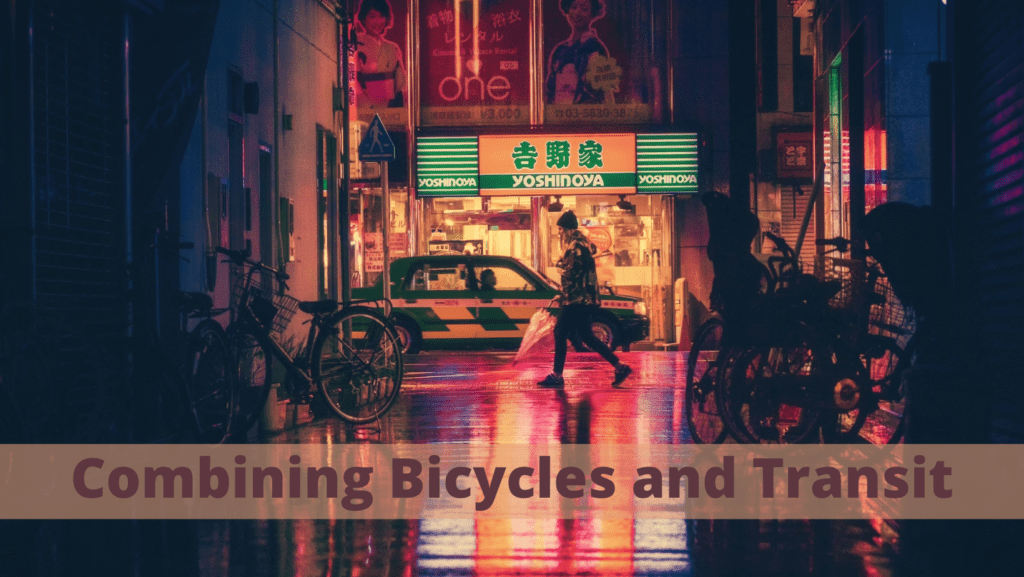
Bikes take up significantly less room than cars, so a given area can accommodate ten times as many bicycles as cars. This helps to alleviate some of the congestion often seen in parking lots. Park-and-ride facilities that cater to cyclists and transit riders also help solve the problem of getting to one’s final destination on the other end, as bicycles can be taken along on transit vehicles.
Though not all transit vehicles have the capacity to accommodate bicycles, this is still a feasible option for many people. Overall, combining bikes and transit instead of cars and transit has numerous benefits concerning cost, space, and convenience.
To determine the potential for creating Cycle-Transit-Users (CTUs) along a given transit line, various available data about the region must be analyzed (demographic, geographic, etc). The only transit agency that has collected data about how often bikes are loaded or unloaded from their buses is RTD in Denver/Boulder.
This data allowed for estimating the potential for increasing transit utilization by improving bike-sharing facilities in other communities.
However, this data may not accurately predict the potential for CTUs along a given transit line because other factors not considered could affect the outcome.
For example, if the community does not have a bike-friendly infrastructure, the potential for CTUs would be lower than predicted. To create an accurate metric, all factors that could potentially affect the formation of CTUs must be considered.
Out of the four possible bike/transit integration strategies, which one is most appealing to you? I was personally drawn to the Shared Bikes option. I think it would be convenient to have access to a bicycle at my final destination without worrying about bringing my bike with me or leaving it at a station. Plus, it would be great to know that a pool of bicycles is available for short-term use all over.
- Bike ON Transit – take your bike with you to your final destination
- Bike TO Transit – A bike park-n-ride is a facility where you leave your bike while traveling.
- Two Bikes – You own two bicycles, one at your boarding station and the other at your final destination.
- Shared Bikes – Several bicycles are also available for short-term usage throughout the city.
While none of the options are perfect, the bike-on-transit option was the clear favorite among focus groups. This option has obvious capacity limitations, but it is easy to scale up if many transit customers want to use bikes.
Transit agencies that care about being on time are also sensitive to the additional idle time taken up by loading and unloading bikes. While this option isn’t perfect, it is the best.
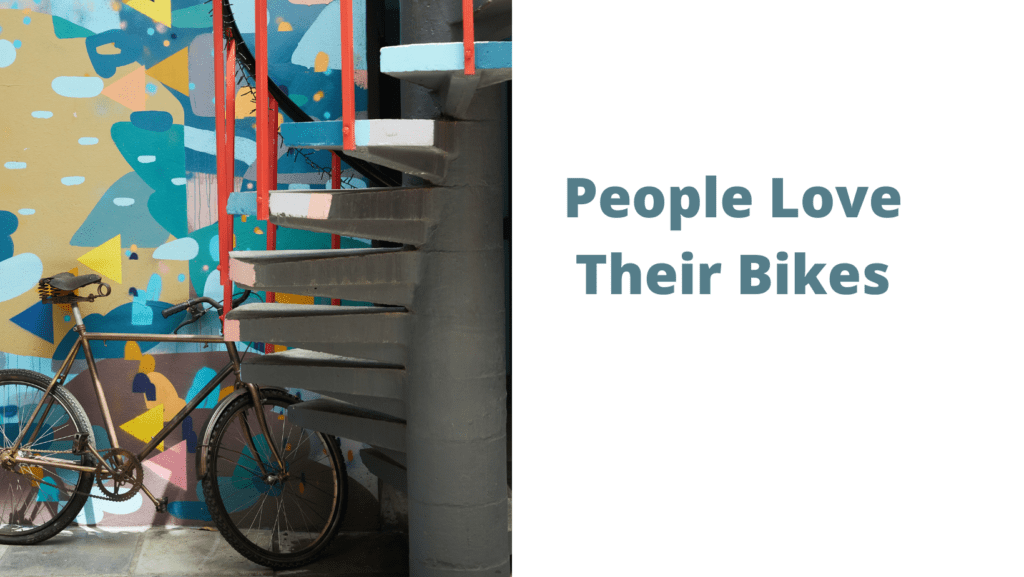
Bike on Transit
Despite its clear advantages, the bike-on-transit option has several limitations that may prevent it from being widely adopted by transit agencies.
First, there is the issue of capacity. While a bus that carries 40 people and three bikes is manageable, this quickly becomes impractical if many transit customers want to use bicycles.
Second, transit agencies that place a high value on punctuality may be reluctant to adopt the bike-on-transit option due to the additional idle time required for loading and unloading bikes.
Finally, there is the question of cost. outfitting buses with racks and other cycling infrastructure can be expensive, and this cost may be prohibitive for many transit agencies. Given these challenges, whether the bike-on-transit option will ever become a mainstream solution for urban transportation remains to be seen.
Bike to Transit
Bike to Transit was generally the second most popular, but it has many of the same limitations in flexibility as the automobile park-n-ride model. Transit needs to get you very close to your ultimate destination to be attractive, and on a regional or express route, that’s hard. It also assumes that you will end up back at the station you started from by the end of the day, limiting the possible trips you might take. However, there are some advantages that bike-to-transit has over park-n-ride.
For one, it is usually cheaper to park a bike at a transit station than to park a car. In addition, bikes take up less space than cars, so they can usually be accommodated even when parking is limited. And finally, biking to transit can help to reduce traffic congestion and air pollution.
Two Bikes
The Dutch have been using bikes for transportation for decades, which is a cheap and easy way to get around. However, the two Bikes model has some limitations. First, it only works if the customer is going to the same place over and over again. This is not very practical for people who need to go to different locations regularly.
Second, it requires secure storage areas for the bikes, or they will be stolen. Finally, this system often results in many orphaned bikes, which are abandoned at the endpoint when the customer no longer needs them. Despite these limitations, the Two Bikes system is still a popular way to get around in the Netherlands.
While many people see bicycles as a fun hobby or a leisurely way to get some exercise, others rely on them as their primary mode of transportation. For bicycles to be a viable option for those who cannot or choose not to drive, they need to be just as reliable as cars. This means having a safe place to store them, counting on a bike available when you need it, and knowing that the bike will still be there when you’re ready to leave.
Shared Bikes
In recent years, shared bike schemes have become possible due to advances in wireless communications and the proliferation of ubiquitous payment/identity cards. I believe that one of the best potential applications for these shared bikes is solving the Last Mile problem.
The Dutch national railway has had success recently with its rapidly expanding OV-Fiets system, which aims to reduce the pain of bike parking in city centers and attract riders away from driving. Similarly, Guangzhou in China has been working to integrate shared bikes with their new bus rapid transit (BRT) system on a massive scale. However, focus group participants have not been very enthusiastic about this option due largely to their strong attachment to their bicycles.
Shared bike schemes have great potential for solving the Last Mile problem. Still, it will be essential to consider potential users’ preferences when designing and implementing these systems.
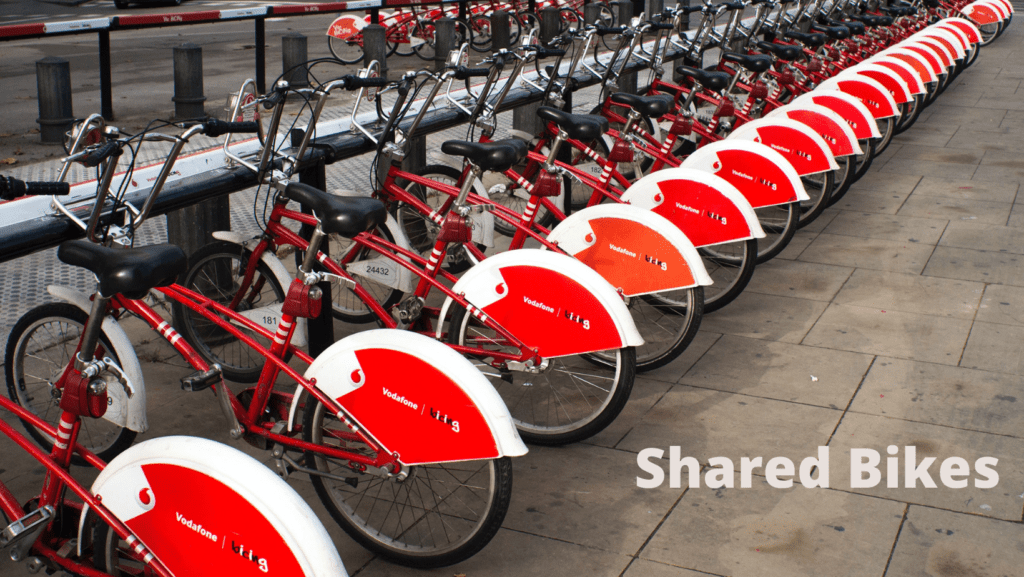
At the same time, this may seem like a tall order, but creating a transportation system that meets these requirements is possible. By investing in bike infrastructure and working to increase bike accessibility, we can make bicycles a realistic option for everyone.
In the past few years, there has been a growing movement to get people out of their cars and onto public transportation or active modes of travel such as biking or walking. This shift is driven by several factors, including concerns about climate change, traffic congestion, and the health impacts of sedentary lifestyles.
However, this transition will not be easy, especially in suburban areas designed specifically for car travel. Suburbs are often sprawling and lack the critical density for public transportation to be efficient.
They also tend to have wide streets and lack pedestrian-friendly features such as sidewalks and crosswalks. As a result, getting people out of their cars in the suburbs is likely to be a challenge.
However, it is essential to make this transition to reduce our reliance on automobiles and improve our overall health and wellbeing.
